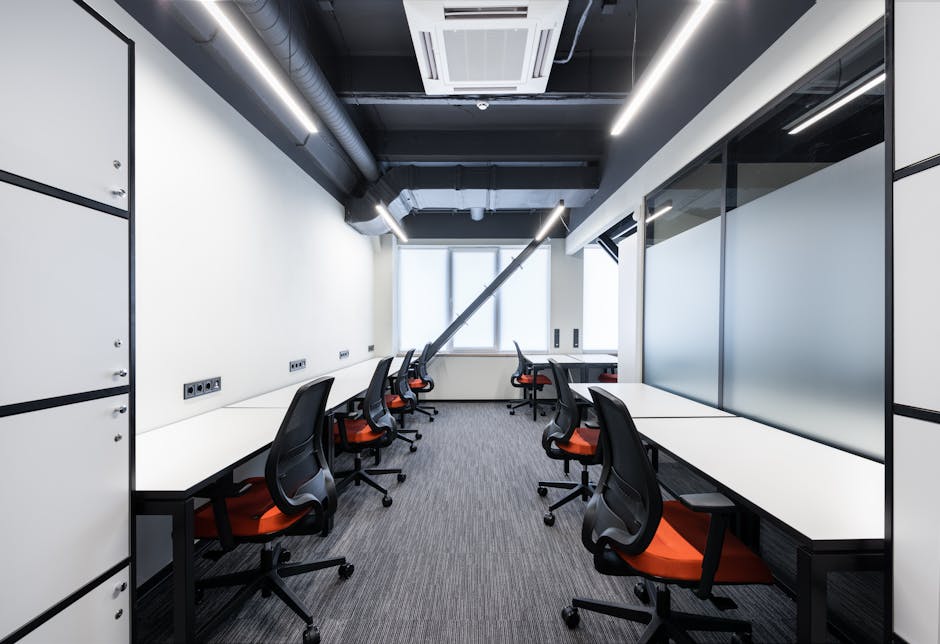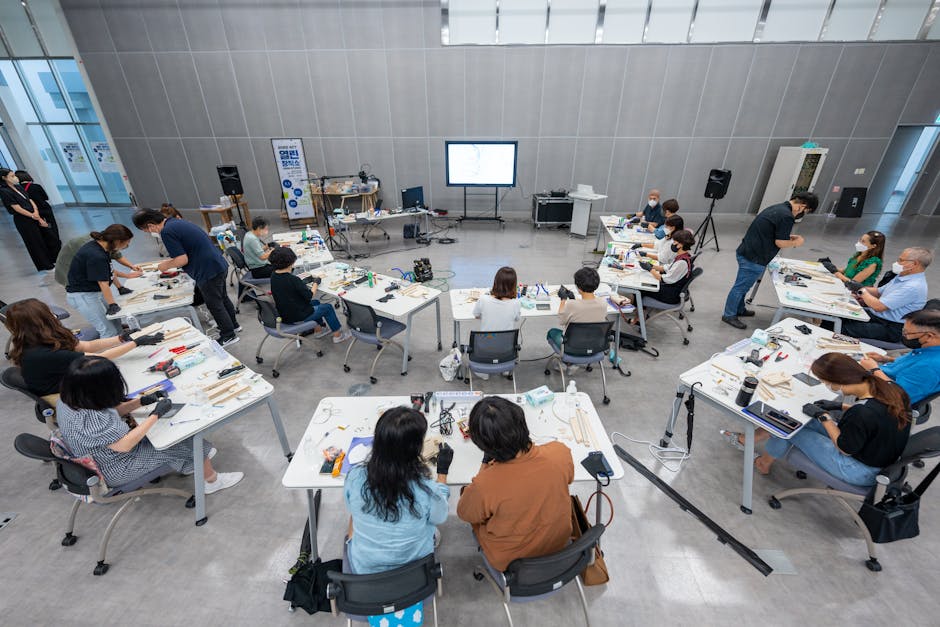Mastering Conference Room Setup: A Comprehensive Guide for Modern Workplaces
“Discover the art of crafting the ideal conference room setup for your organization. This comprehensive guide explores various layout styles, essential equipment, and key factors to consider when designing a space that fosters collaboration, productivity, and innovation. ”

The Importance of an Effective Conference Room Setup
In today's fast-paced business environment, the conference room serves as the epicenter of collaboration, decision-making, and innovation. A well-designed conference room setup can significantly impact the productivity and success of your meetings, fostering better communication and leaving a lasting impression on both internal teams and external clients.

Benefits of an Optimal Conference Room Setup
-
Enhanced Communication: A thoughtfully arranged space facilitates effective dialogue among team members, promoting collaborative problem-solving and decision-making.
-
Professionalism: A sophisticated conference room setup speaks volumes about your company's commitment to quality and attention to detail.
-
Leveraging Technology: With the right equipment, you can create an environment conducive to shared learning and interaction, regardless of participants' physical locations.
-
Employee Satisfaction: A comfortable and well-equipped meeting space makes employees feel valued and inspired to contribute their best ideas.
Types of Conference Room Setups
Choosing the right conference room layout is crucial for meeting effectiveness. Let's explore some popular styles and their advantages:
Boardroom Style
The classic boardroom style features a large central table, usually rectangular or oval-shaped. This setup is ideal for formal meetings and decision-making sessions, as it promotes equality and fosters constructive debate.
Hollow Square Style
Similar to the boardroom layout, the hollow square style uses multiple tables set end-to-end, creating an empty space in the center. This arrangement is beneficial for larger groups seeking an intimate discussion dynamic.
U-Shape Style
The U-shaped conference room setup is characterized by tables arranged in a 'U' formation with chairs placed on the outside areas facing inward. This configuration is excellent for presentations and collaborative discussions, allowing the speaker to move freely within the open area.

Auditorium Style
The auditorium or row-based setup is ideal for high-capacity environments focused on lectures, presentations, or training sessions. With rows of chairs facing a stage or screen, this layout maximizes audience attention on a single focal point.
Classroom Style
Reminiscent of traditional school layouts, the classroom style features rows of tables where participants face the head of the room. This setup is perfect for education-driven sessions and note-taking, but it may limit attendee interactivity.
Essential Equipment for Conference Room Setup
To create a productive meeting environment, ensure your conference room is equipped with the following essentials:
-
Wi-Fi Connectivity: A stable and fast internet connection is crucial for seamless online activities and video conferencing.
-
High-Quality Cameras: Invest in PTZ (pan-tilt-zoom) cameras or conference-specific camera systems with wide-angle lenses and high-definition resolution.
-
Microphones: Choose from handheld, lapel, or tabletop boundary microphones to ensure clear audio transmission.
-
Speakers: Select high-quality speakers that provide excellent sound for both in-person and remote participants.
-
Whiteboard and Markers: A large whiteboard with colored markers facilitates visual collaboration and brainstorming.
-
Video Monitors and Displays: Install large screen monitors capable of full HD output for clear visuals during presentations and video conferences.
-
HDMI/VGA/USB Cords: Provide a variety of cables to connect different devices to the display.
-
Tabletop Controller: Invest in a controller with advanced features for easy integration and control of room settings.
-
Conference Room Booking Software: Implement a booking system to manage room reservations and avoid scheduling conflicts.
-
Digital Conference Room Signage: Use digital displays to show room availability and provide instructions for equipment use.

Factors to Consider When Setting Up a Conference Room
When designing your conference room, keep these key factors in mind:
-
Accessibility: Ensure the room is conveniently located and easily accessible for all participants, including those with disabilities.
-
Acoustics: Choose a space that shields users from outside noise and prevents echoes for clear communication.
-
Furniture: Select comfortable, ergonomic chairs and tables that support long meetings and facilitate easy equipment access.
-
Outlet Placement: Position outlets strategically near where electronic devices will be used to avoid unsightly trailing wires.
-
Lighting: Balance natural and artificial lighting to create a comfortable environment that enhances visibility without causing screen glare.
-
Internet Connectivity: Invest in robust Wi-Fi and provide ethernet ports for stable wired connections when needed.
Monitoring Room Utilization for Optimal Setup
To ensure your conference room setup remains effective over time, it's essential to monitor room utilization and analyze usage patterns. This data-driven approach allows you to optimize your space and create setups tailored to specific meeting needs.
Consider implementing a room booking system that tracks reservations and attendance. This will provide valuable insights into which rooms are in high demand and when, allowing you to allocate resources more efficiently.
By aligning your conference room setups with actual usage patterns, you can enhance productivity and achieve cost savings through optimized space allocation.
Conclusion
Creating the perfect conference room setup is an art that combines thoughtful design, cutting-edge technology, and a deep understanding of your organization's needs. By considering the various layout styles, essential equipment, and key factors discussed in this guide, you can craft a meeting space that fosters collaboration, impresses clients, and drives your business forward.
Remember that the ideal conference room setup is not a one-size-fits-all solution. Continuously gather feedback from users and analyze room utilization data to refine and improve your setup over time. With the right approach, your conference room can become a powerful tool for innovation and success in your workplace.